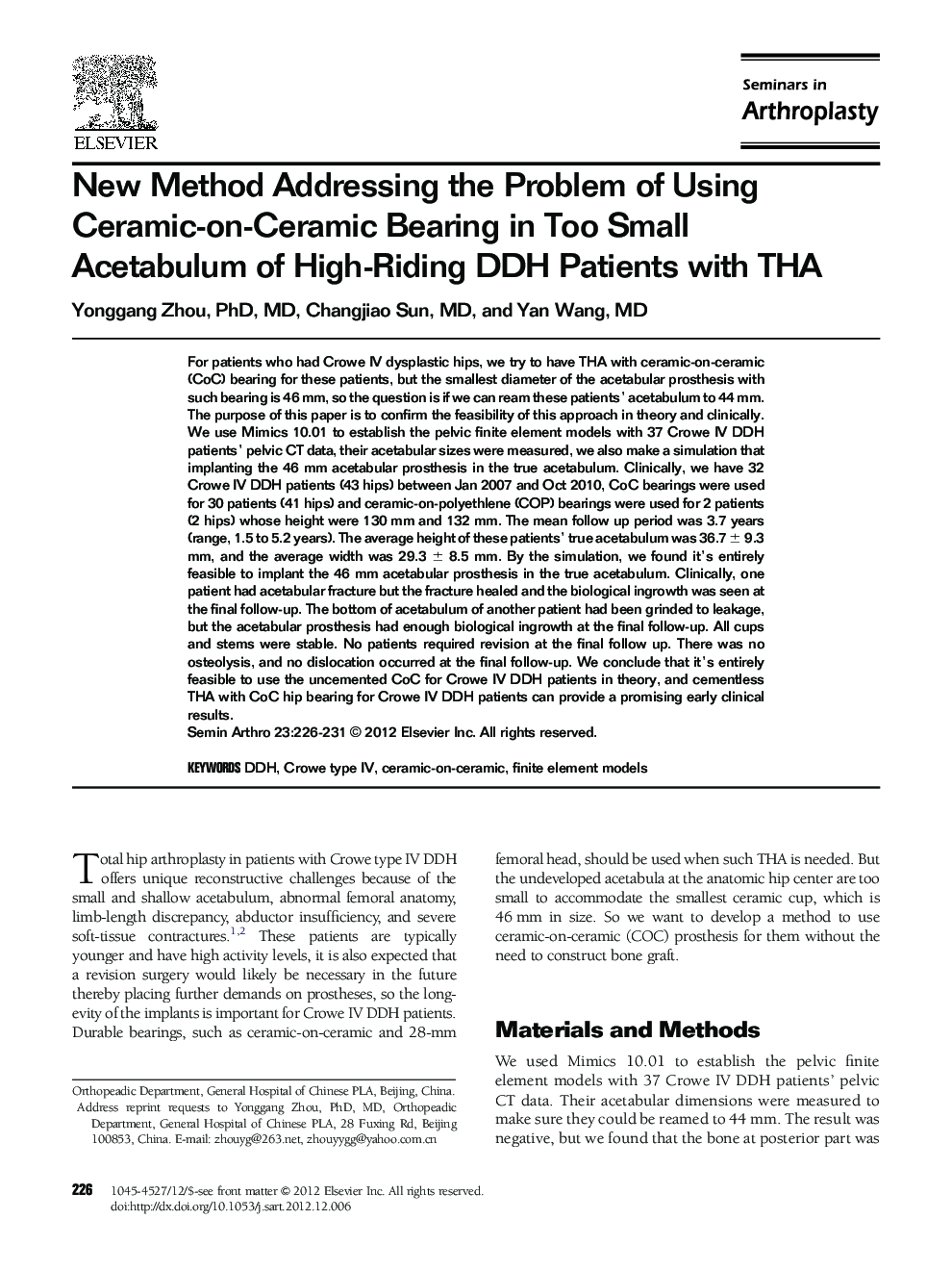| کد مقاله | کد نشریه | سال انتشار | مقاله انگلیسی | نسخه تمام متن |
|---|---|---|---|---|
| 4093766 | 1268424 | 2012 | 6 صفحه PDF | دانلود رایگان |

For patients who had Crowe IV dysplastic hips, we try to have THA with ceramic-on-ceramic (CoC) bearing for these patients, but the smallest diameter of the acetabular prosthesis with such bearing is 46 mm, so the question is if we can ream these patients' acetabulum to 44 mm. The purpose of this paper is to confirm the feasibility of this approach in theory and clinically. We use Mimics 10.01 to establish the pelvic finite element models with 37 Crowe IV DDH patients' pelvic CT data, their acetabular sizes were measured, we also make a simulation that implanting the 46 mm acetabular prosthesis in the true acetabulum. Clinically, we have 32 Crowe IV DDH patients (43 hips) between Jan 2007 and Oct 2010, CoC bearings were used for 30 patients (41 hips) and ceramic-on-polyethlene (COP) bearings were used for 2 patients (2 hips) whose height were 130 mm and 132 mm. The mean follow up period was 3.7 years (range, 1.5 to 5.2 years). The average height of these patients' true acetabulum was 36.7 ± 9.3 mm, and the average width was 29.3 ± 8.5 mm. By the simulation, we found it's entirely feasible to implant the 46 mm acetabular prosthesis in the true acetabulum. Clinically, one patient had acetabular fracture but the fracture healed and the biological ingrowth was seen at the final follow-up. The bottom of acetabulum of another patient had been grinded to leakage, but the acetabular prosthesis had enough biological ingrowth at the final follow-up. All cups and stems were stable. No patients required revision at the final follow up. There was no osteolysis, and no dislocation occurred at the final follow-up. We conclude that it's entirely feasible to use the uncemented CoC for Crowe IV DDH patients in theory, and cementless THA with CoC hip bearing for Crowe IV DDH patients can provide a promising early clinical results.
Journal: Seminars in Arthroplasty - Volume 23, Issue 4, December 2012, Pages 226–231